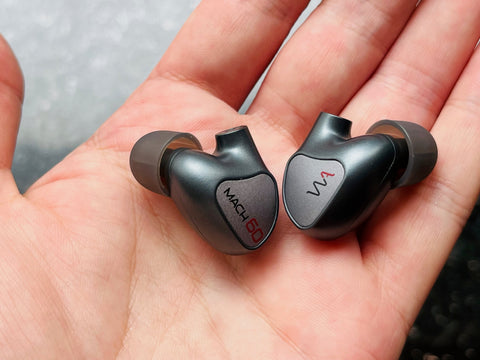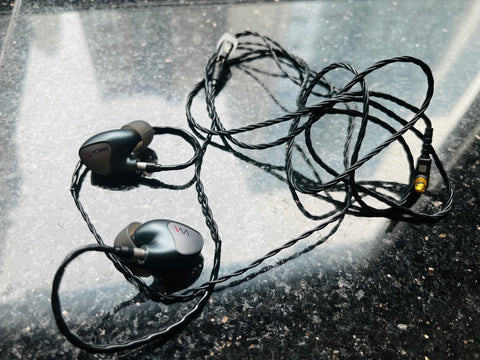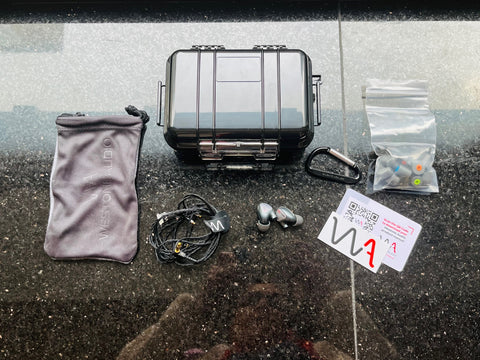Westone MACH 60 Review
by Tyler Luke
(Updated )
Bookmark this article
Copy to clipboard
Email to a Friend

The well-established IEM company, Westone, has been around for many years. But the company has recently introduced a new generation of models based on its previous line-up. I just listened to the Westone MACH 80 and was thrilled by the vividly 3D soundstage, fast transient response, dynamic mids and super transparent highs. So, I was curious to see what the brand would do with its 6 driver design, the MACH 60. How does it differ in terms of tuning and overall performance?
In the Box
Look and Feel
All the Westone models sport the same ergonomic shape. Smaller than many of the more modern, snazzy looking IEMs on the market, the MACH 60 retains the classic compact shape and round contours that the company is known for. It seems that they haven’t made any changes, simply because the design works so well. The MACH 60 (along with the other MACH models) is the most comfortable IEM I’ve worn in a long time. And I felt no fatigue at all even throughout long listening sessions.

Design
The MACH 60 sports a six-driver design with with a 3-way crossover system: 2 drivers power the lows, 2 drive the mids, and 2 drive the highs.
For the MACH 60, Westone has employed the Linum Estrone Superbax cable. It is much thinner than the MACH 80’s 224 strand silver-plated copper cable. But like the MACH 80, it uses a T2 connection, which many argue, is a more solid alternative to the sometimes temperamental 2-pin and MMCX connectors.
WIth an impedance of 35 Ohms, the MACH 60 is easy to drive. I suggest using a DAC/Amp dongle to optimize headroom and resolution.

Sound Impressions
Soundstage
Westone really excels in this department. And the MACH 60 is no exception. The imaging here is fantastic. It not only offers plenty of height, but the sense of depth is amply perceivable. You’ll hear subtle degrees in placement behind and in front of the ear. And although the stereo field is not immensely wide, there is plenty of space between instruments. So, it’s a clean and thoroughly multidimensional soundscape that feels immersive and vividly colorful.
Lows
Unlike the MACH 80, the lows on the MACH 60 are thick and deep. Sub-bass frequencies have a vibrational force, while both, the lower and upper bass feel rich and impactful. Although the low-end stops short of skewing the overall balance, it does lend a satisfying warmth to the entire mix. So, it may not feel as tight and tidy as the MACH 80. Rather, it offers a different profile altogether that feels fleshy and sumptous.
Mids
The MACH 60 presents a full and relatively even midrange. The low-mids provide a sense of lushness, while the upper mids stay moderate and avoid protruding through the mix. So, unlike the MACH 80, vocals don’t sit as far forward and snares don’t hit as hard. So, it feels less dynamic. But for those who lose a really full-bodied and warm tuning, the MACH 60 delivers with flying colors. At the same time, there’s no muddiness. Separation is well defined, while maintaining a softness and tenderness to the handling of instruments like acoustic guitars and pianos.
Highs
Although perhaps not as transparent and delicate as the highs on the MACH 80, the MACH 60 offers a delicious, velvety quality to instruments like string and vocals. At the same time, highs don’t feel heavy, and still allow vocals to float through note progressions. While the high frequencies are generally smooth, there is a touch of peakiness in the highest treble, which can become uncomfortable at rare moments, such as when listening to trumpets at the high frequencies.
Summary
With an immersive soundstage, deep bass and full bodied mids, the MACH 60 is ideal for anyone enjoys a warm, lush and all-encompassing sound. Those who prefer a more dynamic profile with more prominent vocals and upper-mids will likely prefer the MACH 80. But regardless of which sound signature you choose, both headphones deliver clean layering, fast speed, impressive transparency and crowd pleasing tuning.
You can find the MACH 60 at Audio 46.
Specifications
- 3-way Passive Crossover
- DRIVERS: Six Balanced-Armature Drivers
- FREQ RESPONSE: 8Hz – 20kHz
- SENSITIVITY: 100dB @1kHz
- IMPEDANCE: 35 Ohms @1kHz
Get the Latest Headphone News and Reviews in Your Inbox
Subscribe to our newsletter and get 10% off your first purchase!*
*some restrictions may apply


 FREE
FREE 



